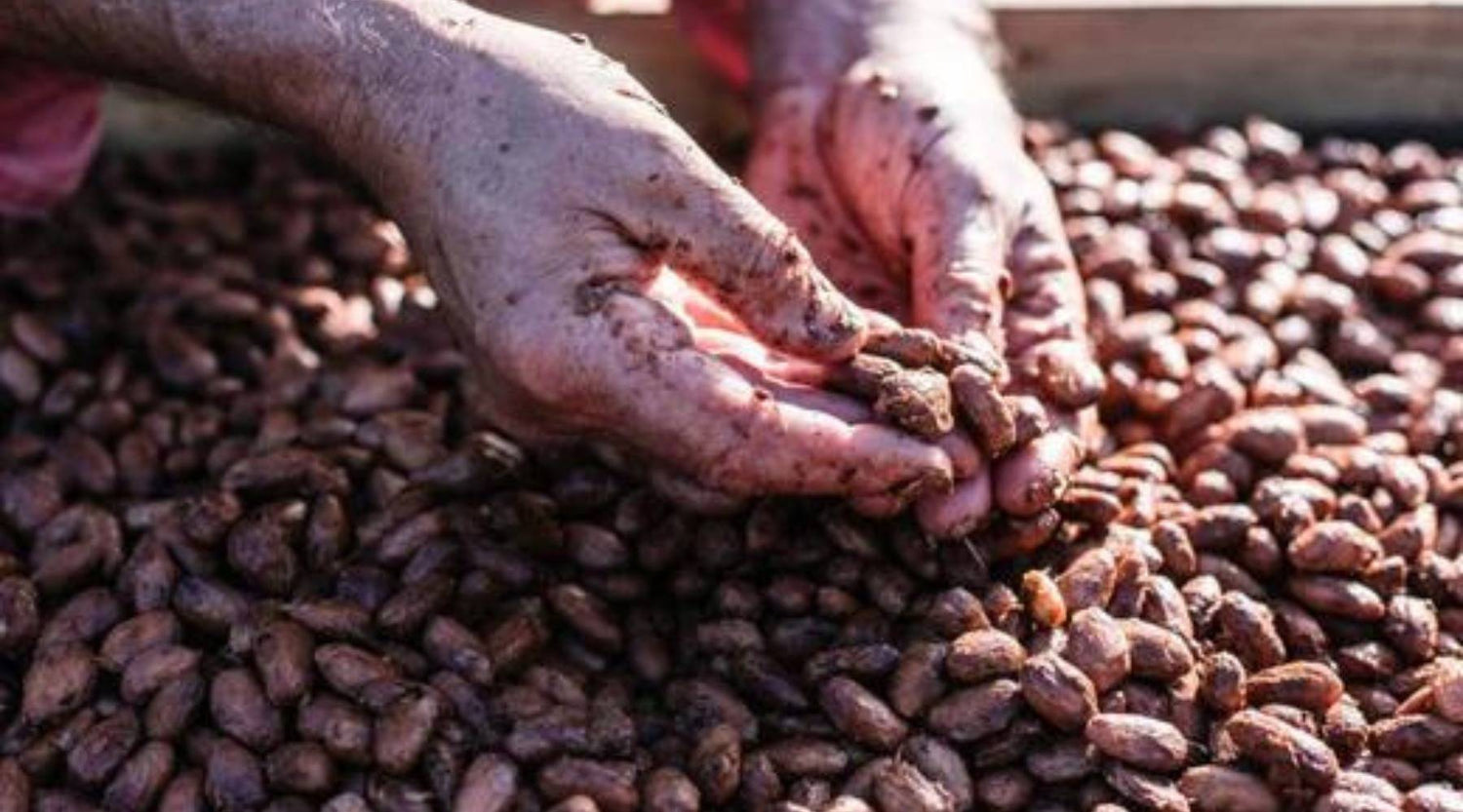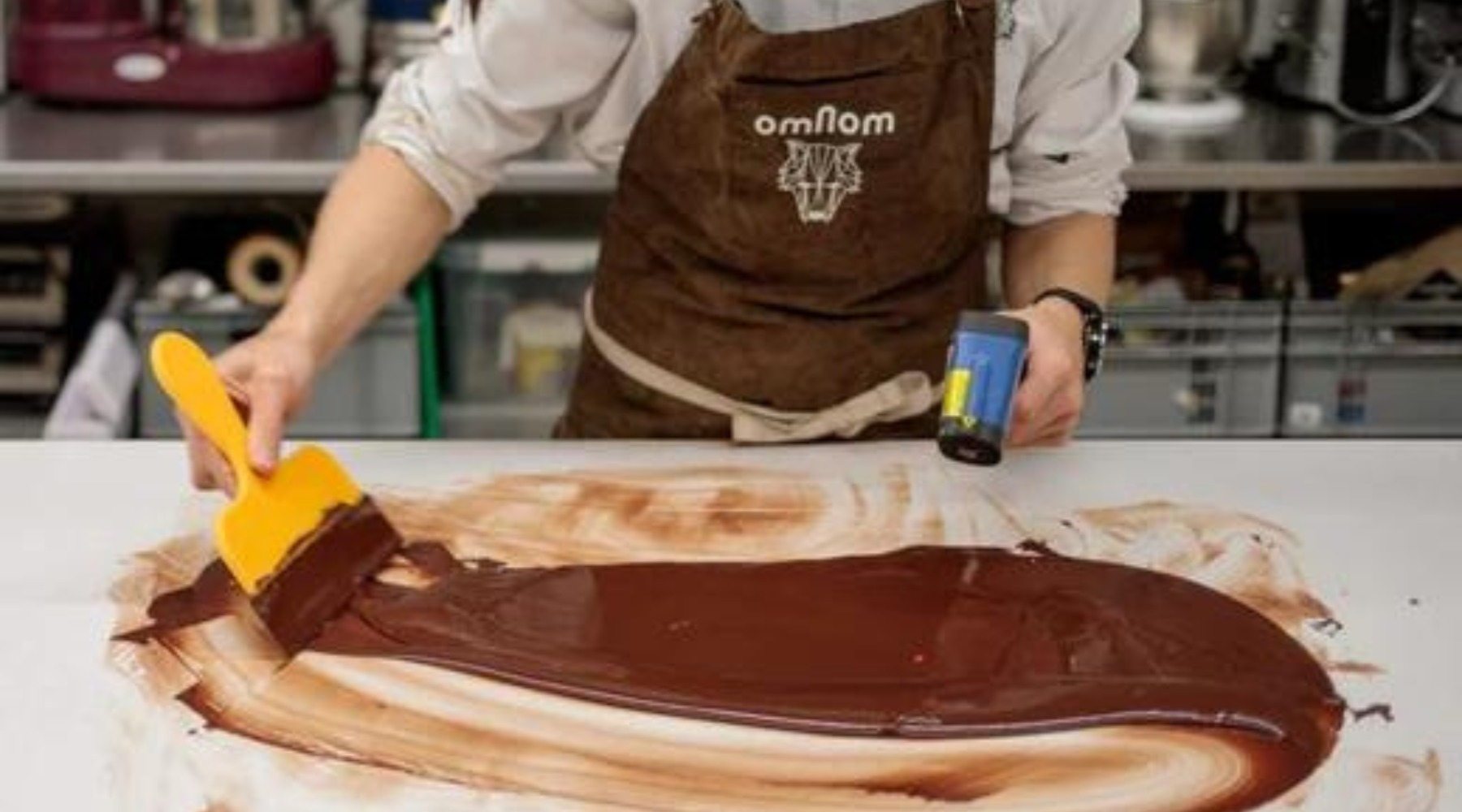Sourdough and kombucha have made a comeback during the home office period. And some have even dared to try (water) kefir, yoghurt or miso. However, very few people know that one of our favorite sweets – chocolate – is also fermented. Fermentation is of crucial importance in the production process from cocoa to chocolate. Why is this so and what happens during the fermentation process? You can find out here!
Fermentation makes the difference
Even though many people don't know that cocoa is fermented, fermentation is one of the most important steps in chocolate production. During this time, the flavor profile and acidity of the cocoa beans develop. Unfermented cocoa, on the other hand, is considered completely inedible. By the way, for the pea or in our case bean counters among us: If you take it seriously, it is not the cocoa beans that ferment. Instead, the yeasts, bacteria and enzymes ferment the white pulp that surrounds the cocoa beans. This means that the cocoa beans experience the full brunt of the acid, heat and enzyme effects, which then changes them internally and externally - through the fermentation of the pulp.  Fresh cocoa beans before fermentation ©Lydgate Farms
Fresh cocoa beans before fermentation ©Lydgate Farms
Why does the pulp ferment?
But how is the fermentation of the cocoa beans triggered? Basically, the pulp and the cocoa beans embedded in it are sterile as long as it is inside the unopened cocoa fruit. However, as soon as the cocoa beans and their juicy pulp are removed from the pod, naturally occurring yeasts and bacteria quickly find their way into the sweet pulp. These microbial “vaccines” come from their immediate environment. As with other ferments, the bacteria come from workers' hands, the outside of the pod, flying insects or simply from the air. In the case of a “planned” fermentation that is aimed at specific fermentation effects, a specially tailored microbial “cocktail” with selected contents can also be added.  Fresh, sliced cocoa beans ©Lydgate Farms
Fresh, sliced cocoa beans ©Lydgate Farms
The fermentation process
Depending on regional preferences and available resources, fermentation methods vary. This means that individual cocoa farmers and cocoa cooperatives make different decisions regarding their equipment. There are differences in the choice of fermentation boxes, the duration and number of days, the cocoa fermentation and the frequency with which the cocoa is turned in the boxes.
But there are also processes that occur similarly in all fermentation methods. These include, for example, the anaerobic and aerobic phase. Nevertheless, various factors also play a role here, such as the degree of maturity of the beans, the climatic conditions, the quality of the cocoa beans and the batch size.
But what exactly are the anaerobic and aerobic phases?
The anaerobic phase of cocoa fermentation
When there is a lack of oxygen in an environment, conditions are said to be anaerobic. Because the pulp tightly surrounds the cocoa beans, they form a kind of barrier that prevents air from reaching the beans. The juicy pulp consists mainly of water, as well as a high sugar content and various acids. The combination of acid and sugar creates the perfect conditions for the microorganisms to work. Yeasts, lactic acid bacteria and pulp enzymes play a particularly important role here. Through anaerobic respiration - which occurs in the absence of oxygen - the yeasts consume the simple sugars and produce carbon dioxide, ethanol and small amounts of energy. The lactic acid bacteria, in turn, convert acid and glucose (and other carbohydrates in the pulp) into lactic acid. If you open the fermentation box in this phase, you can observe this “work” directly on the surface. Small carbon dioxide bubbles bubble and waft on the cocoa pulp mixture.
The enzymes present also help to decompose the pulp and convert it into liquid, the so-called “sweat water”. By the way, sweat water sounds more disgusting than it is and is now being turned into delicious juices by startups like KOA . Once the pulp – i.e. the pulp – has been broken down, more air can flow into the process. At the same time, the citric acid, which also runs off with the sweat water, is broken down, increasing the overall pH value of the fermentation process. The increased air supply and the rising pH value finally initiate the aerobic phase.  A typical fermentation box with banana leaf to cover the cocoa ©Lydgate Farms
A typical fermentation box with banana leaf to cover the cocoa ©Lydgate Farms
The hot (aerobic) phase of cocoa fermentation
In contrast to the anaerobic phase, the aerobic phase of the fermentation of cocoa is characterized by the fact that oxygen is now contained in the environment. This happens because during cocoa processing, the cocoa in the fermentation boxes is regularly “turned” so that oxygen reaches the cocoa beans. Depending on the fermentation profile, fermentation box, insulation and quantity of beans to be fermented, the influence of oxygen varies. At the same time, turning the cocoa beans regularly means that the fermentation process becomes more even throughout the batch.
It also gets very hot during the aerobic phase! You can find out why we find the concept of raw cocoa somewhat questionable and whether raw cocoa is even a health risk here . But back to the aerobic phase: This step is dominated by acetic acid bacteria, which oxidize ethanol and acids to produce acetic acid. This acetic acid is in turn further broken down into carbon dioxide and water by the additional oxygen. The decomposition process of ethanol releases heat, which significantly increases the overall temperature of the cocoa. Depending on the fermentation profile, the cocoa beans are turned at different frequencies and heat escapes. The temperature drops, but at the same time it builds up again quickly due to the supply of oxygen. The aim of this process is to break down cell walls through the combination of heat and diffusion of acid and ethanol. The cocoa beans can no longer germinate and the “chemically” changed structure within the beans has - depending on the fermentation style - developed the first aromas.  Cocoa beans during fermentation ©Lydgate Farms
Cocoa beans during fermentation ©Lydgate Farms
There is no chocolate without cocoa fermentation
Unfermented, raw cocoa beans have a very bitter taste. While the sweet pulp entices animals to eat it, the bitter seeds (cocoa beans) are spit out and thus spread. The astringent taste and reddish color of fresh cocoa beans come from the anthocyanins (polyphenols) they contain. Through the fermentation of cocoa - and later especially through the roasting of the cocoa beans - the polyphenol content decreases , which promotes the development of taste.
A few manufacturers have set themselves the goal of working with unroasted cocoa beans. Unfortunately, most people don't really do it well. However, a great example of chocolate made from unroasted beans with a great fermentation profile comes from New York by Raaka. Like no other manufacturer, the Raaka team manages to transform the original taste of the fermented cocoa beans into really good and fair chocolate. Would you also like to try a chocolate like this? With a bit of luck you can try one of the rare Raaka chocolates at our Theyo tastings as a team event . An exciting culinary journey that everyone is guaranteed to enjoy!
Do you want to know what happens before fermentation during the cocoa harvest? Here you can find out more about cocoa cultivation and harvesting ...
FAQ on the topic “Fermentation of cocoa beans”
Why are cocoa beans fermented?
In cocoa processing and production, fermentation is an essential step that cannot be skipped. Meanwhile, the flavor profile and aroma of the beans develop. Unfermented cocoa beans are also considered inedible.
What is Fermented Cocoa?
The cocoa that you find in the supermarket and that chocolate is made from is always fermented cocoa. Fermentation is an essential step in the production of cocoa and cannot be skipped, otherwise the final product will be inedible.
How long does cocoa fermentation take?
The fermentation of cocoa usually takes several days, but between 5 and 10 days is normal.
Is cocoa always fermented?
This question can be answered succinctly: Yes. Unfermented cocoa is considered inedible.
What do you do with fermented cocoa beans?
Fermented cocoa beans are then dried in the classic manufacturing process and then further processed into chocolate or the respective cocoa end product. You can find out more about the chocolate manufacturing process in the article “ How is chocolate made? ”.
Are fermented cocoa beans healthy?
As already mentioned several times, fermentation is an essential step in the processing of cocoa. Would you like to find out more about the health-promoting effects of cocoa? Then you might be interested in our article about cocoa nibs and how healthy they really are .
What role do microorganisms play in the fermentation of cocoa?
Microorganisms can be said to be the main actors in the fermentation of cocoa. Naturally occurring yeasts and bacteria start the fermentation and keep it going.



